Did you ever try to attend several parties in one evening because they all sounded so fun? I was given a similar opportunity via an email from the U.S. Embassy the other day.
“Multiple protests on Saturday beginning at noon. Demonstrators are expected on a variety of topics, including Gilets Jaunes, the 150th anniversary of La Commune, against child abuse, and for legalization of cannabis.”
I’m not usually big on demonstrations in Paris, which have a tendency to end in tear gas, tire fires and broken glass. But who could resist such an interesting combination? Especially on the first warm, sunny day in weeks. These particular events were very unlikely to turn violent, based on what the participants stood for and against. I could meet new people, learn more about France and enjoy the phaseout of COVID lockdown in an afternoon of demonstration-hopping.
The challenge was getting to enough manifestations, as they are called here. They were all in afternoon prime time, in various parts of town. That led me to rule out out two others: Motorcyclists in the west protesting the Paris mayor’s plan to keep fuel-burning vehicles out of central zones and health workers in the 13th arrondissement demanding more spending.
I was most intrigued by the march celebrating La Commune, the two-month period in 1871 when republican anti-monarchists set up self-governing municipal councils around the country against the orders of the royalist national government in Versailles.
"Les morts sont des vivants mêlés à nos combats" écrivait Hugo. En 1936, 600000 personnes ont célébré la Commune au Mur des Fédérés. Et nous, combien serons-nous au Père-Lachaise pour la "montée au Mur", le 29 mai? Le défi est à relever…
(Je retweeterai cela de temps en temps😊) pic.twitter.com/vkZ8CyKnQW— Ludivine Bantigny (@Ludivine_Bantig) April 27, 2021
During its short life, the Paris commune promulgated laws for separation of church and state, abolition of child labor, debt forgiveness and other reforms, though the “communards” also executed such hostages as the Archbishop of Paris and burned many buildings.
Almost since the national army wiped them out in “Bloody Week,” the last week in May, the Commune has been celebrated as the people taking power for the people. A commemorative demonstration in 1936, a year when the political left was ascendant, drew 600,000. Now the 150th anniversary had arrived. Newspapers, magazines and television had been talking about it for months.
The demonstration was leaving from the Place de la République in the east, the same square from which the marijuana-legalization crowd was also departing (though heading in a different direction), so that seemed the best place to start.
I was expecting maybe a few hundred history buffs and some Communists. When I got off the Métro, I realized yet again how little I understand my adopted country. Practically every left-wing party and organization in France was represented in the masses walking to Père Lachaise Cemetery, where the final massacre had taken place.
Certainly, there were plenty of Communists.
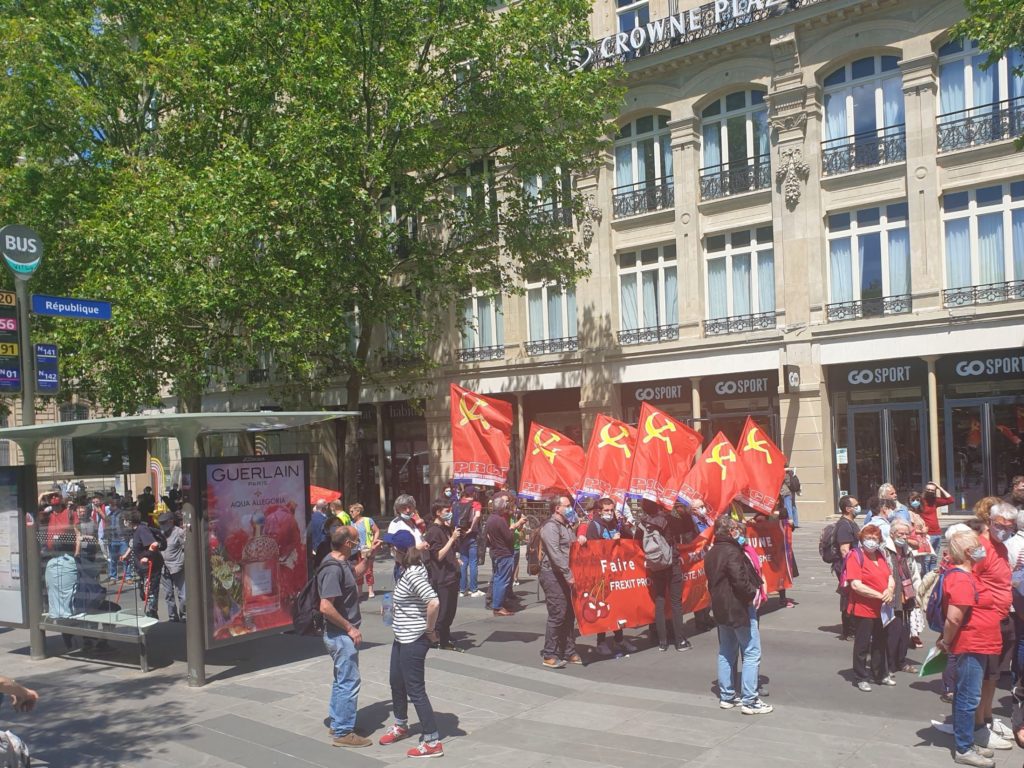
But a veritable political salad of parties and groups also was waving flags, playing music, singing and chanting. The Socialists, the Radical Left, the League of the Rights of Man, anarchists, pacifists, multiple labor unions – all in all, more than 100 groups participated. At least 1,000 people, by my totally unscientific estimate.
President Emmanuel Macron, a centrist who has been tacking to the capitalist and anti-immigrant right ahead of elections next year, was a favorite target.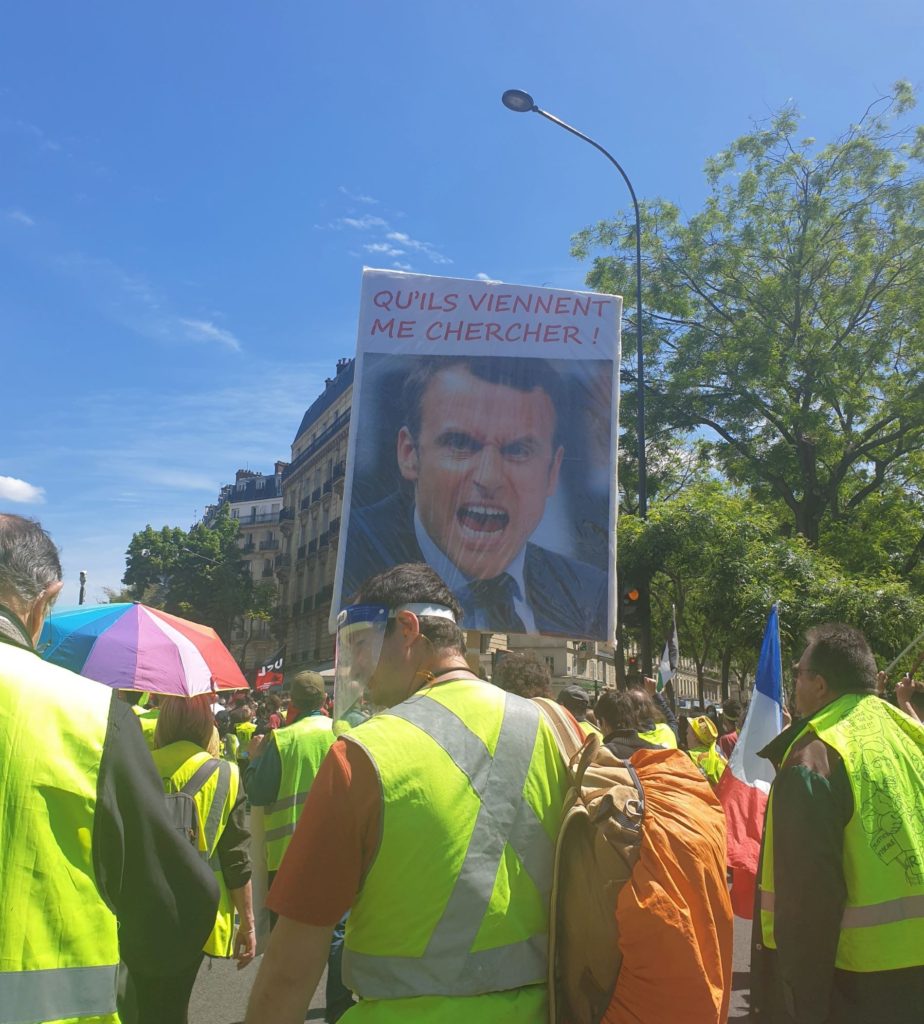
The sign loosely translates as: “Let Them Come Get Me.”
At first, I was disappointed that a fascinating piece of French history was being hijacked for political ends. So I asked one of the demonstrators – as it happened, a Yellow Vest (Gilet Jaune) member – what the connection was between Macron and the Commune. (Since he was a Gilet Jaune I checked that protest off my list.)
“That’s simple,” he said. “Macron is the opposite of the Commune. We believe in the people, he believes in the elite. We want the Commune to live again.”
I started looking more closely at what the people and the signs were saying and sure enough, even the political protesters gave their arguments a historical framework. A flyer from the Workers’ Party, for instance, compared Paris Mayor Anne Hidalgo (a Socialist) to the Versailles royalists because, they said, her government had expelled striking garbage workers from City Hall.
The Free Thinkers, echoing the Commune’s separation of church and state, marched because, they said, the Catholic church was getting too much power again. A handful of protesters against the U.S. presence in South Korea recalled their country’s history of rising up against dictatorship. Nicaraguan dissenters to their regime said they were in solidarity with the Commune.
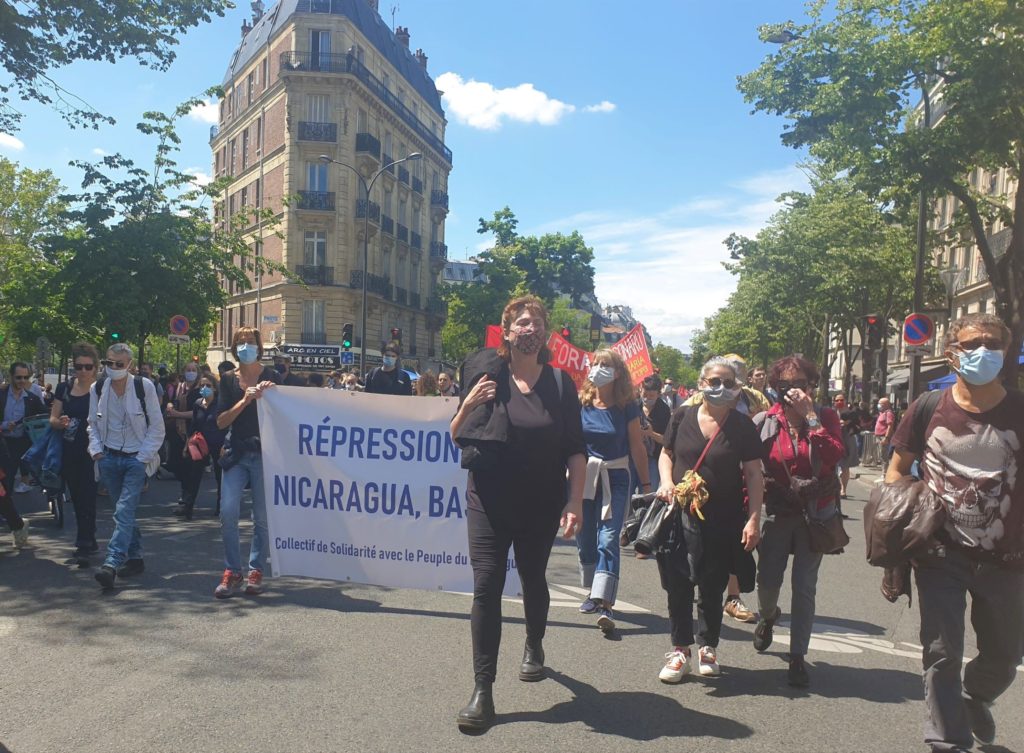
The atmosphere was joyous and inclusive – a good thing, Libération newspaper pointed out the next day, since the Left doesn’t agree on anything any more.
But time was passing. I hurried back to the Place de la République in hopes I could still find the cannabis-legalization protesters.
Unsurprisingly, they were running late. The demonstration, including several vehicles, had just started out for the Place de la Bastille. The crowd was younger and mellower than the communards. What I smelled may have had something to do with that.
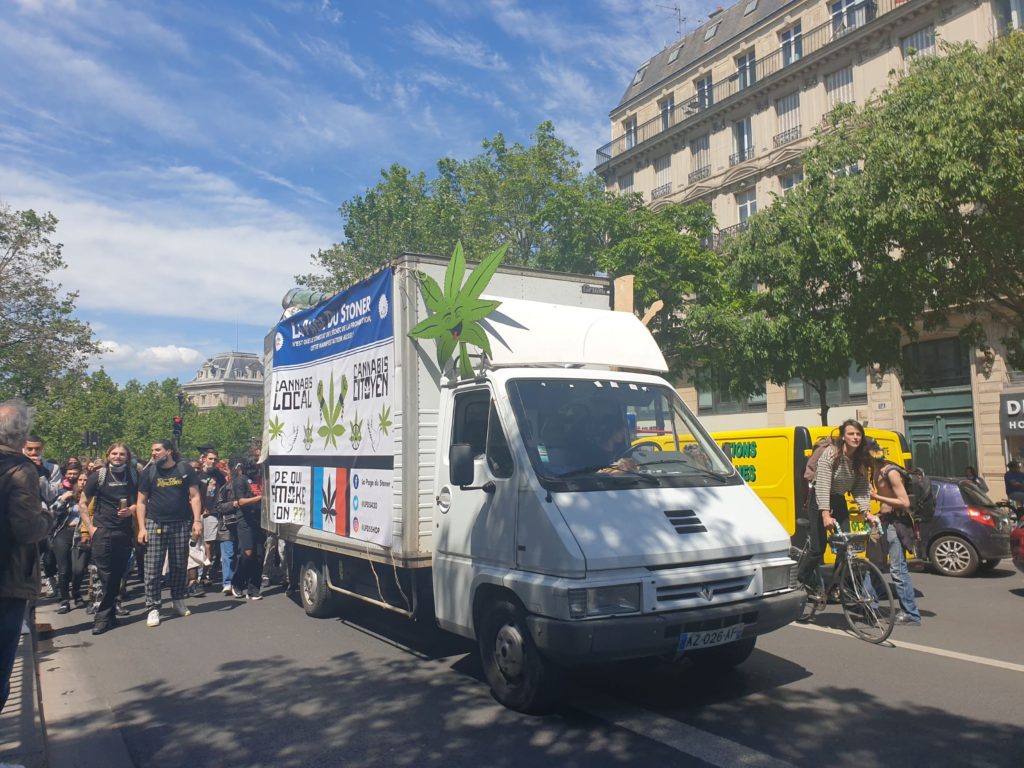
The demo had far fewer participants than the first one, maybe 200. Yet they were being watched over by many more police officers in riot gear. The burly cops blocked each intersection in front of the protesters and moved back only as the demo advanced. It was very entertaining to the outdoor diners.
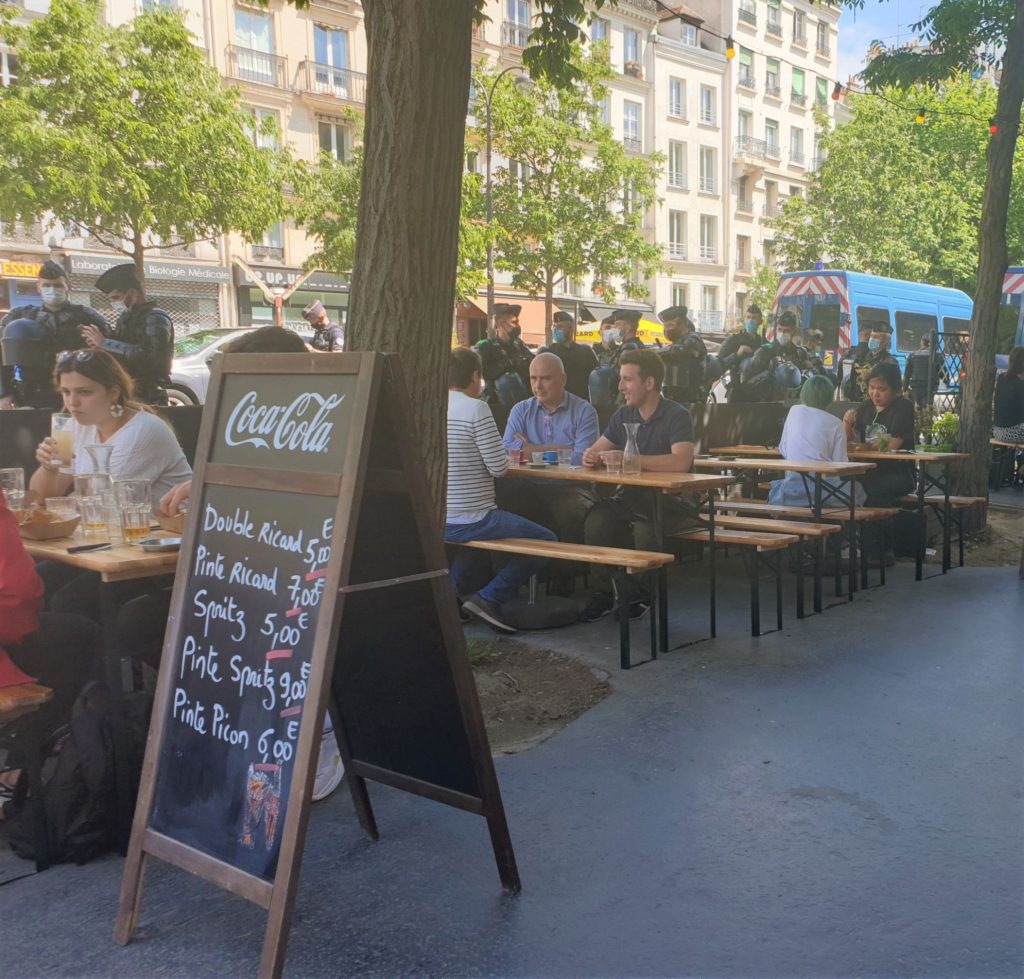
In two different locations, cops were taking pictures of the demonstrators.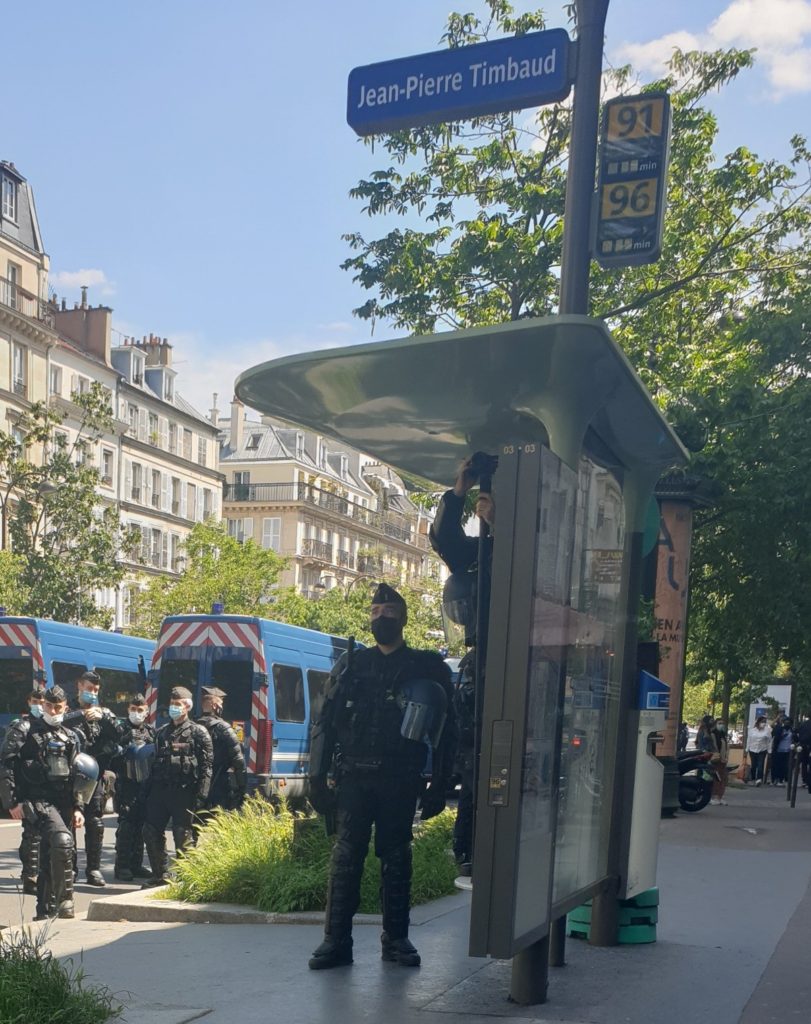

I asked a woman carrying a sign with a message too vulgar to translate why the police were so interested.
“I have no idea, Madame,” she responded. “But there was an undercover policewoman walking right along with us taking photos back a ways.”
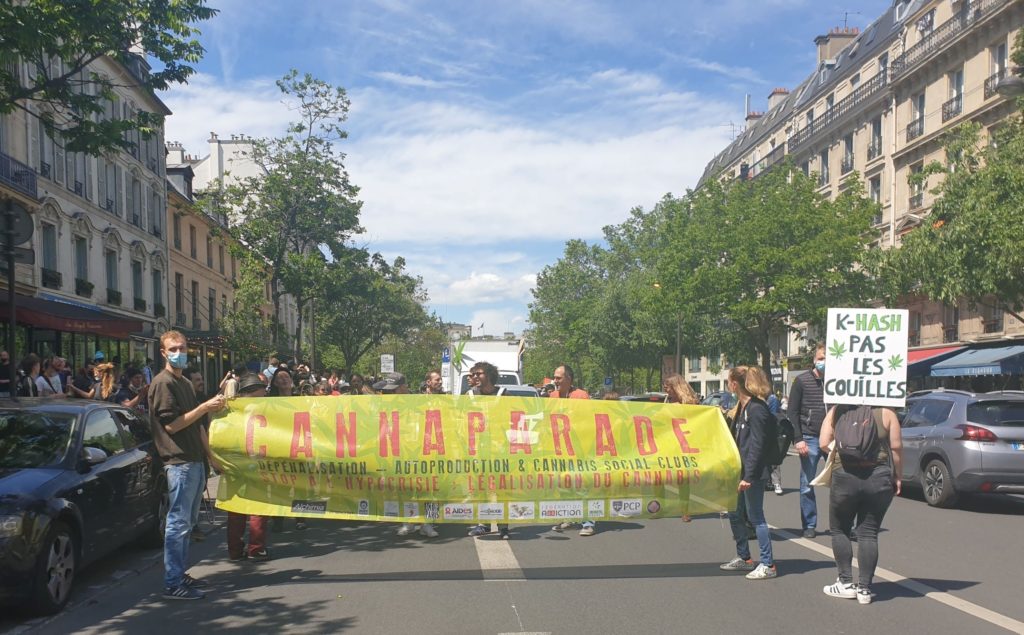
Demonstrations in France have a long and deep history. Ever since the Revolution, governments have tolerated them, even when they involved violence, takeovers of government buildings or the kidnapping of corporate executives, because the consequences of repression were seen as worse. Why were a few stoners different?
Question unanswered, I headed back to the Métro. But République – a longtime center of demonstrations and commemorations – had plenty more to offer. It seemed as if everybody with a beef who wasn’t parading elsewhere was making arguments all around the square, with music, megaphones and waving flags.

I identified at least three African national flags, as well as that of the Turkish Kurds. Even though I hadn’t found the protest against child abuse or seen the motorcyclists, they made my day even more enriching.
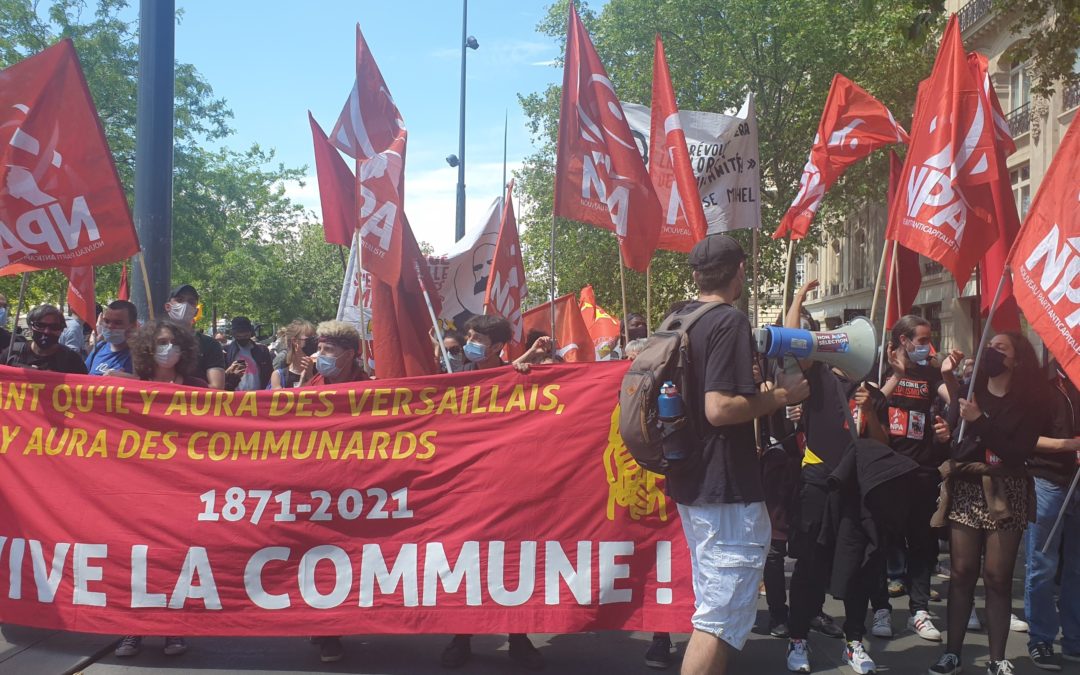
Thanks, timely. Watched a film about Godard which included the mass demos in 1968.
You’re welcome! Yes, it was a real watershed in French politics.